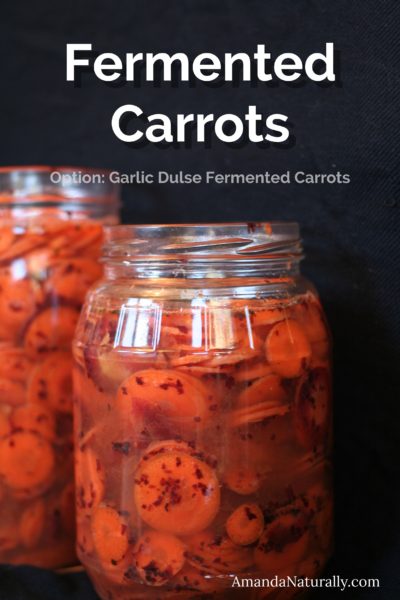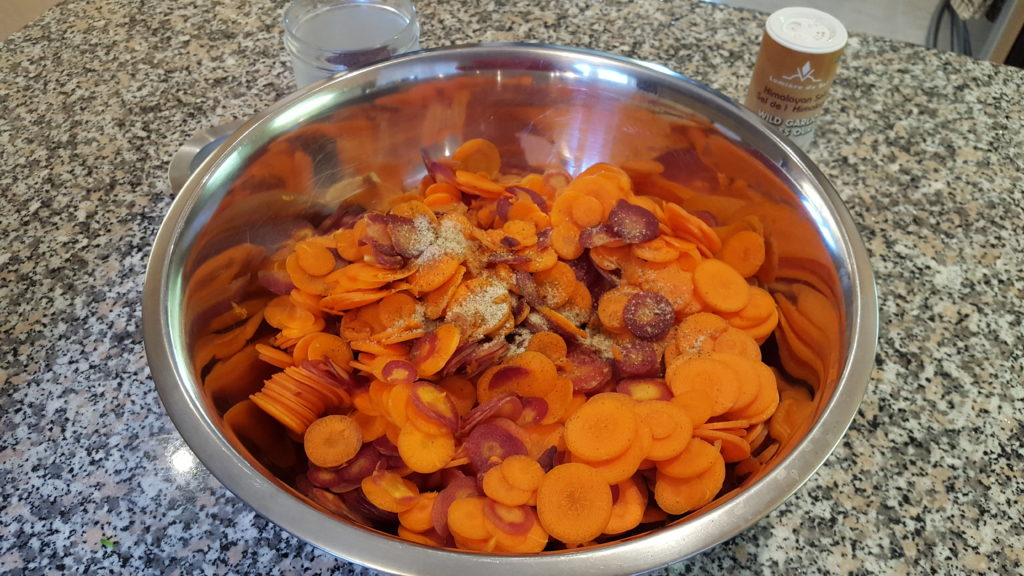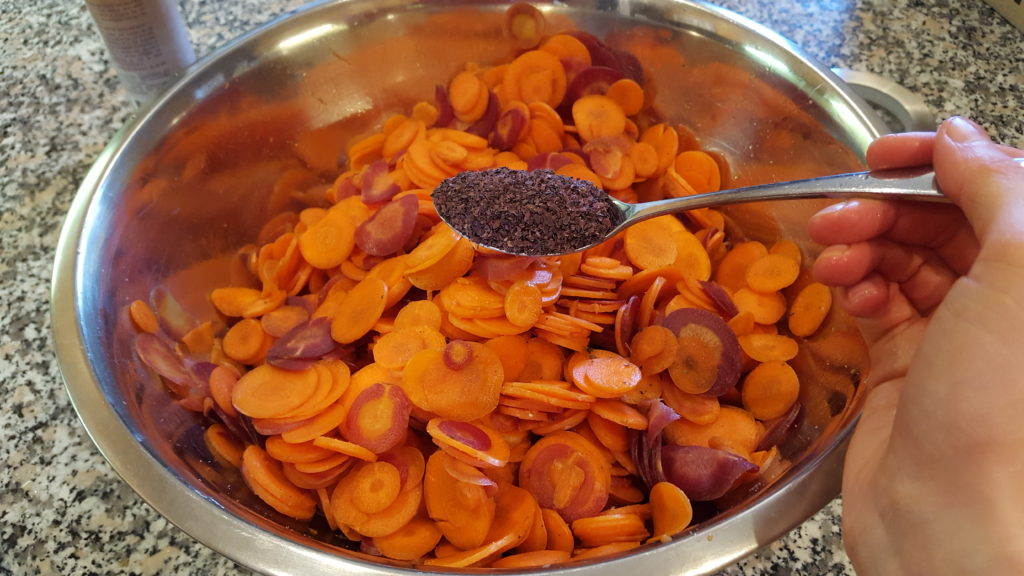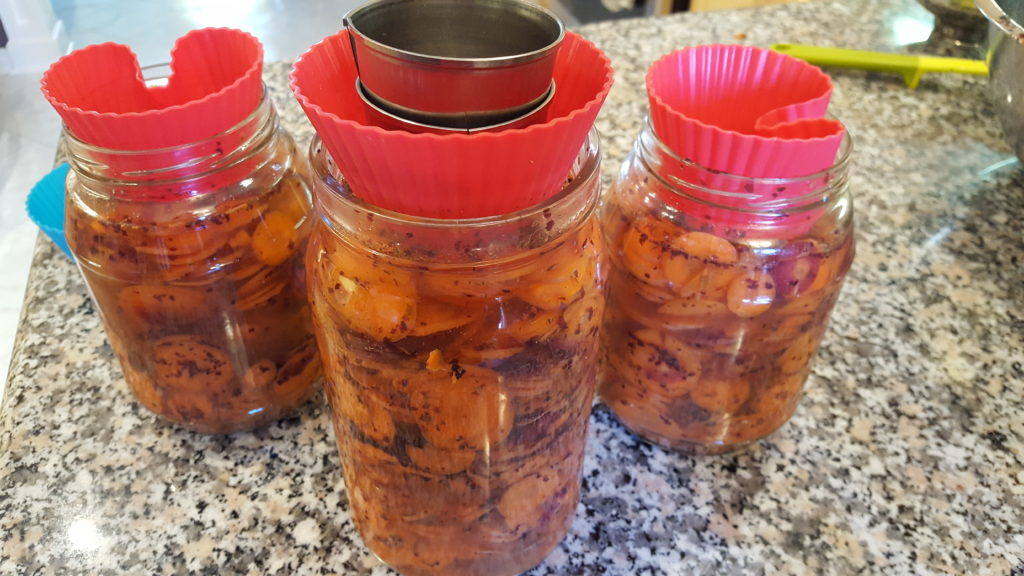 Fermented foods are a staple in every single traditional culture, and their absence in the typical North American Diet, is likely a major contributor to poor health. I’ve written about gut heath and fermented foods many times on this blog already, so feel free to check out those posts:
Fermented foods are a staple in every single traditional culture, and their absence in the typical North American Diet, is likely a major contributor to poor health. I’ve written about gut heath and fermented foods many times on this blog already, so feel free to check out those posts:
Sauerkraut was my introduction to fermented foods, and for a lot of people this is an easy add-in to their diet – especially if you like sauerkraut, pickles and olives. However, the combination of fermentation and cabbage can be a little too much for the fermented food rookie. And if you are interested in making your own fermented foods (which I highly recommend for 2 reasons, [1] it becomes inoculated with microbes from your environment and [2] it is a fraction of the price), sauerkraut has a fairly long fermentation period – 3-4 weeks. So instead, I recommend Fermented Carrots.
These are my favourite way to introduce fermented foods to kids and adults alike. A little sweeter for the rookie-palate, and with a 4-7 day fermentation period, they are a great intro to home-fermenting.
Fermented Carrots
(Option: Garlic Dulse Fermented Carrots)
Ingredients & Equipment
- 2 lbs carrots
- 4 tsp fine-ground sea salt, or garlic sea salt (my preference!)
- OPTIONAL: 1 heaping tbsp dulse
- 2 cups filtered water
- 2 more heaping tsp sea salt, or garlic sea salt
- jars
- silicone muffin liners (my preference, but you can get creative)
Directions
1. Slice carrots as thinly as possible. I recommend using the slicer attachment on your food processor. (Note: save your carrot tops for making broth!)
2. Add to a bowl, and toss with sea salt, or garlic-sea salt.

3. Optional – add a heaping tbsp of dulse for extra minerals and thyroid support!

4. Toss well. Spoon into jars, packing carrots down as tightly as you can.
5. Create a brine by mixing 1 tsp salt (garlic salt) with 1 cup of water, and adding to the jars of carrots. Add enough brine to cover carrots completely.
6. Use something to hold the carrots under the water. I like to use my silicone muffin liners!

7. Place in a cool, dark corner of the room, out of direct sunlight. But don’t put them in a closet or cupboard where you can forget about them (learned this one the hard way!). Check on them every day to make sure the carrots are still below the water. If not, add a bit more brine, or push down the muffin liner. Let ferment for 4-7 days. Start checking at 4 days to see if you like the tangy flavour. I usually ferment for 5 days.
I love adding a spoonful to salads, or just on the side of a meal. When I was breastfeeding, my favourite snack was to toast 2 pieces of GF bread, spread half an avocado on each piece and top with these bad boys. Delish!

Amanda,
Those muffin liners are a brilliant idea!!! I will be using them 🙂
Thanks Brock! I was always frustrated about not having jars that fit inside each other, and didn’t want to spend the $$ on fancy fermenting lids, so thought it was the perfect solution! 🙂
I agree! I love the silicone muffin liner idea! I currently use my glass egg cups used to hold hard & soft boiled eggs for my fermentation projects. I am going to try your solution. 🙂
Oooh that’s a great idea too! 🙂
I’ve made fermented carrots a couple of times in a much lazier way than described here but they turned out great! I use mason jars and glass fermentation weights and so far my sauerkraut and carrots have been awesome, but pickles have been a huge fail. I also let my fermenting food hang out next to my fermenting Kombucha, and I’ve always wondered if that is a good or bad idea… in any case, I’m loving this whole process of getting to know fermenting at home! Keep the recipes coming!! : )
That’s awesome! Yeah sometimes you can be super lazy with ferments and it works! Local environment makes a huge difference. My fermenting time changes dramatically from summer to winter. Speaking of local environment, there are quite different critters involved in anaerobic fermenting of veggies compared to yeast-based kombucha. So just be careful not to have any overt cross-contam!
And how amazing is home-fermenting? Super fun science project, and saves a TON of $!!